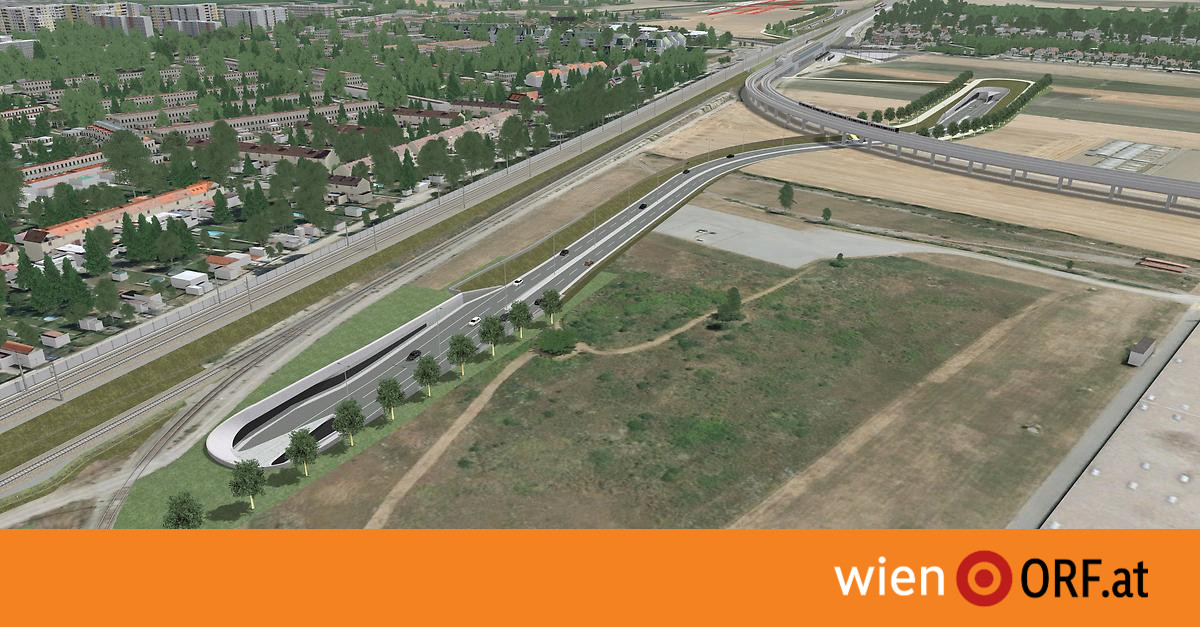The planned city road is to connect the urban development area Aspern with the south-east bypass (junction Hirschstetten) by the end of 2025. According to the current state of planning, the 3.2 kilometer long road should have two 800 and 500 meter long tunnels. The project costs are currently estimated at around 460 million euros.
The project, which, according to the City of Vienna, has a history of around 30 years, is just as controversial as the planned Lobau tunnel. Well-known Viennese scientists have now voiced their concerns, including Hermann Knoflacher, professor emeritus at the Institute for Transport Science (TU Wien), Helga Kromp-Kolb, professor emeritus at the Institute for Meteorology and Climatology (BOKU) and political scientist Mathias Krams.
“More roads lead to more traffic”
Even the designation as “city street” is misleading, annoyed Knoflacher. In fact, it is “a four-lane carriageway that is largely separated from the living organism of the city”. As early as the 1970s, attempts were made to use the term “high-performance road” to “deceive” the population on the planned beltway. After their resistance, the SPÖ government stopped the project in 1972. According to Knoflacher, “a wise and far-sighted decision for the city of Vienna”.
Knoflacher pleaded for comprehensive parking space management, the expansion of public transport and measures for bicycle and pedestrian traffic – as did Barbara Laa, traffic scientist at the Vienna University of Technology: “It is frightening that politicians are still pushing such counterproductive megaprojects with the promise of reducing traffic congestion . The phenomenon of ‘induced traffic’ has long been known to experts: More roads lead to more car traffic. “
Start of construction for the city street Aspern
The start of the construction of the four-lane city street Aspern in Vienna between the Tangente and the Seestadt should take place this year. Project operators and neighbors get into each other’s hair.
–
Impact on climate not taken into account
Helga Kromp-Kolb pointed out that the overriding traffic planning in Vienna had been carried out before the climate targets were set: “Before further decisions are made to implement this traffic plan, the entire concept should be checked for its compatibility with the climate targets.” For Laa is It is irresponsible “that in the midst of the global climate crisis these immense sums of money are to be raised for the construction of new expressways in Vienna – in some cases even in nature reserves. The construction would lead to higher CO2 emissions for decades.
According to political scientist Mathias Krams from the University of Vienna, Stadtstraße is not suitable for achieving the goals of reducing car commuters and achieving climate neutrality by 2040. Rather, it is diametrically opposed to them. Steady traffic growth must be questioned and this must be counteracted with sustainable mobility management. The city street Aspern sets exactly the wrong incentives. “The local council is doing a disservice that is difficult to revise on the way to becoming a ‘model climate city’.”

City for “future-oriented mobility concept”
On the part of the city, the concerns are countered with the well-known arguments. The city street is an important part of a “future-oriented mobility concept”. The goals are therefore to withdraw through traffic from the settlement areas, to significantly improve the quality of life in town centers such as Hirschstetten, Stadlau and Breitenlee by relieving the pressure and also to open up new parts of the city. “We want to Do not allow transit traffic into the city anymore. It is nonsensical to drag transit traffic, especially heavy traffic, which has neither destination nor origin in Vienna, into the city. No metropolis in Europe does that, ”said the Chairman of the Transport Committee, Erich Valentin (SPÖ).
ÖVP and Greens with contrary opinions
Support for the project comes from the Vienna ÖVP. This sees no alternatives to the city street and the Lobau tunnel: “It is incomprehensible why some experts resist getting traffic jams, noise and pollution from the city finally out of the city,” criticized traffic spokesman Wolfgang Kieslich. In addition, the construction of the city street and the Lobau tunnel is an important infrastructure project to create and secure jobs, especially in times like these, emphasized the non-executive city councilor Isabelle Jungnickel.
The Greens, on the other hand, reiterated their rejection of the projects: “Scientists say it clearly: This Danube city motorway through Vienna should be stopped. It is an ancient project and not a solution to the challenges of the climate crisis never our climate policy goals, ”said mobility spokespersons Heidisequence and Kilian Stark.
–


